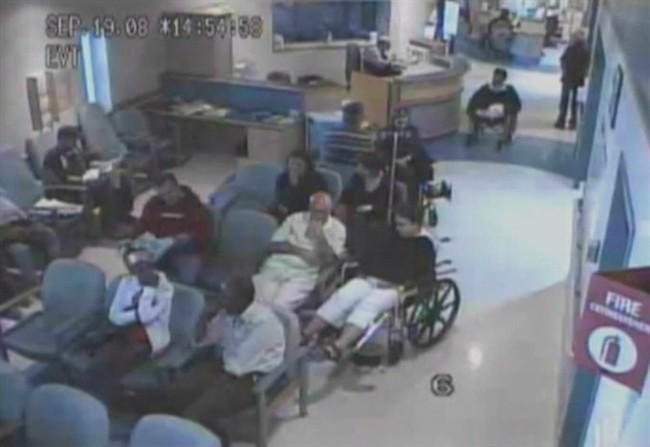WINNIPEG – A nurse at a Winnipeg hospital says she sounded a warning that “people will die” in a newly designed emergency room months before a man died during a 34-hour wait for care.

Jan Kozubal told the inquest into the death of Brian Sinclair she had concerns about the renovated emergency room at Winnipeg’s Health Sciences Centre when it opened in 2007. Kozubal testified that the redesign made it hard to see patients in the waiting room from the nurses’ station.
“I voiced concerns,” Kozubal told the inquest Tuesday.
According to notes from an administrative review conducted after Sinclair’s death in September 2008, Kozubal relayed to senior staff that she had told an emergency room doctor “people will die in here.”
She told senior staff leading the review “we voiced our concerns from Day 1 about the TV facing backwards” making it impossible to see the faces of many patients from the nurses’ station.
But she said “nobody was listened to,” the notes state.
The inquest has heard testimony from other nurses who expressed similar concerns that the new layout of the emergency department made it hard to monitor the waiting room.
Sinclair, who was a double-amputee, went to the hospital the afternoon of Sept. 19, 2008 because he hadn’t urinated in 24 hours. Although Kozubal was working that day, she said she doesn’t remember ever seeing the man or his name being on the triage list.
The inquest has seen footage of Sinclair talking to a triage aide who writes something down on a piece of paper before Sinclair wheels himself into the waiting room. There he languished for 34 hours, vomiting on himself several times as his condition deteriorated, before he was discovered dead.
Although a nurse checked to see if he had an admissions bracelet on and he was given a bowl when he started vomiting, no one examined him or asked if he was waiting to see a doctor.
He died of a treatable bladder infection caused by a blocked catheter.
The administrative review following Sinclair’s death found 17 staff members observed the aboriginal man in the waiting room, but no one asked if he was waiting for medical care.
The review said they all made different assumptions about why he was there.
Some assumed he had been triaged already and was waiting for a bed in the back of the treatment area. Others assumed he had been treated and discharged. Still some thought he was drunk and was waiting for a ride under the Intoxicated Persons Detention Act or just needed a warm place to rest.
Kozubal told the inquest the emergency room was busy and short-staffed the day Sinclair arrived seeking care.
“There were only two of us at triage when there should have been three of us,” she said. “It was very difficult to keep up with the workload. Reassessment was not getting done as it should have been.”
The Sinclair family’s lawyers made a motion calling for four more people — including the senior hospital administrators who conducted the internal review — to testify but Judge Tim Preston dismissed their arguments Tuesday.
“I am satisfied that I understand the circumstances of Brian Sinclair’s death,” he told the court.
The inquest doesn’t have any more witnesses scheduled this week and will only sit Friday to hear Preston outline plans for the next phase of the inquest. The inquest is expected to delve into the broader issues surrounding Sinclair’s death — including hospital backlogs and wait times — when it resumes sitting for two weeks in February.



Comments